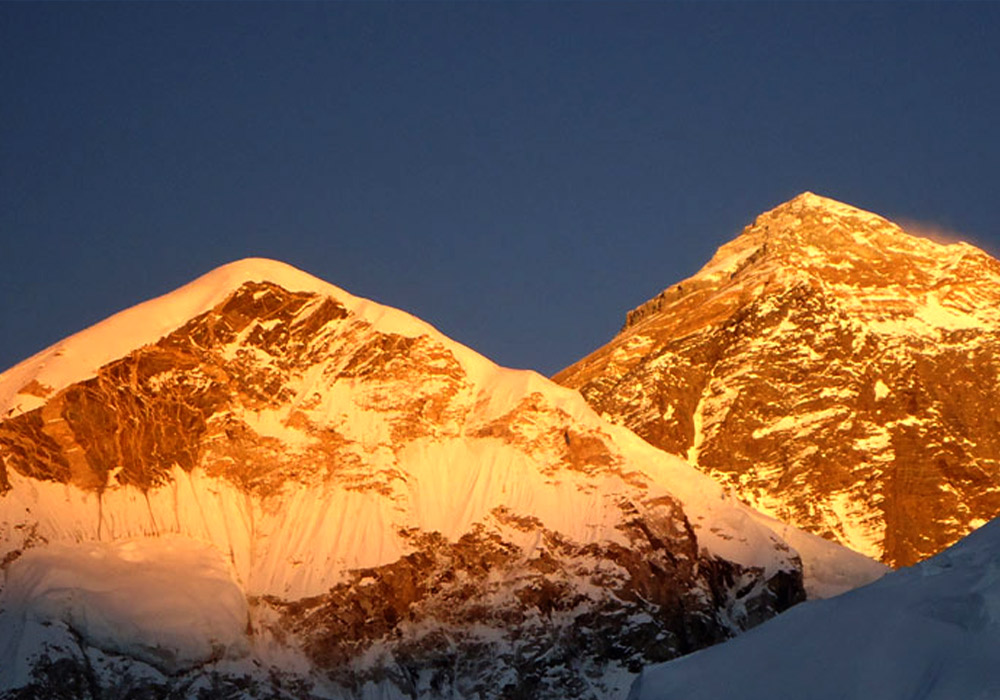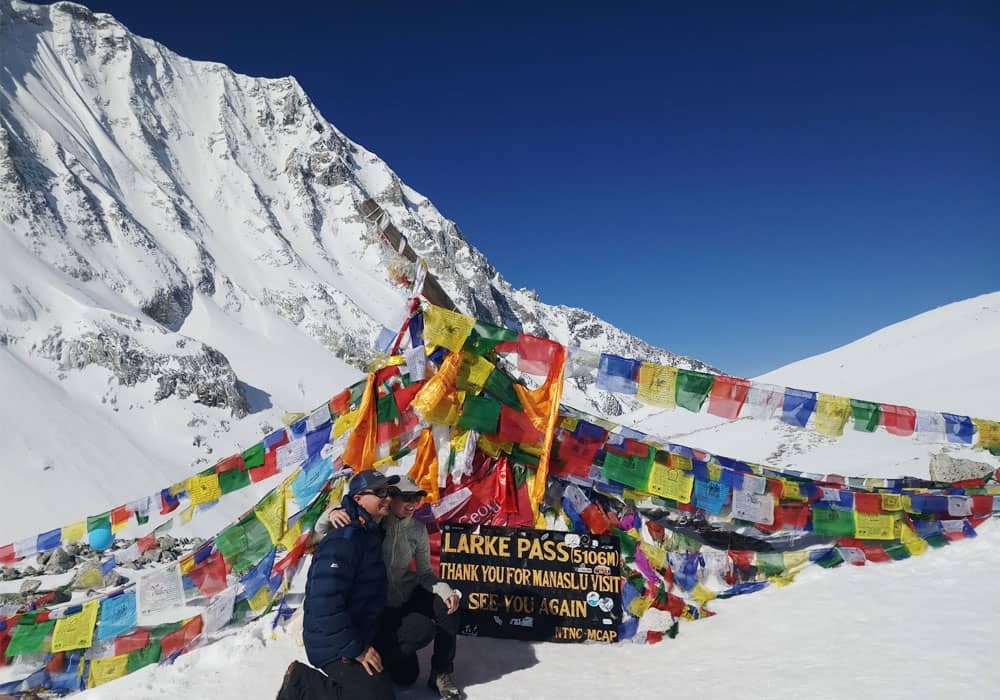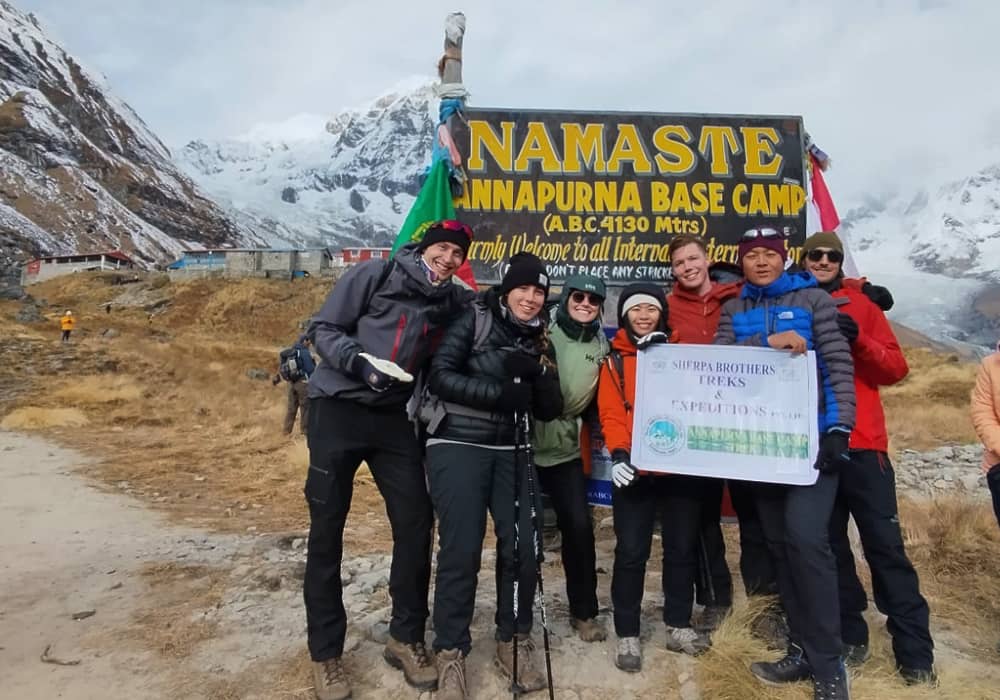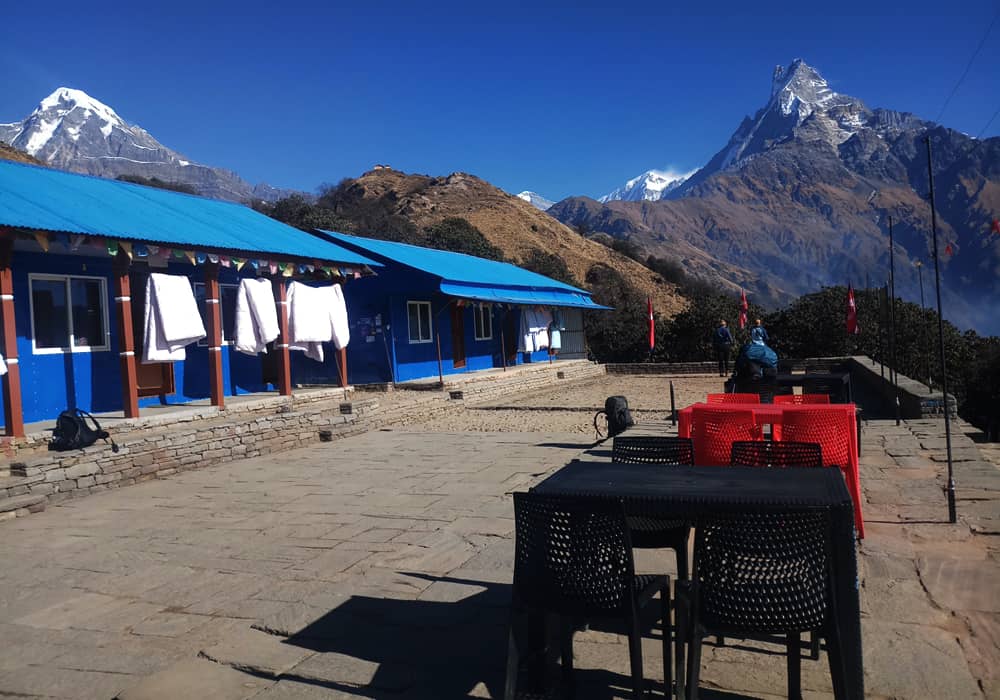EBC trek and Island Peak climbing, this journey includes adventure and calls for more physical effort. The typical walking distance of 6-7 hours per day is not tough, but summit to the peak, 6,173 m, are the most difficult parts of the journey. Physical fitness, experience trekking at altitudes of at least 4000 to 4500 meters, and a fundamental knowledge of climbing techniques are requirements for climbing this peak. At the time of registration, participants must disclose any existing medical conditions or issues.
Accommodation and Food
In Kathmandu: 3 star Deluxe hotel with bed and breakfast on twin sharing.
On trek: 11 days standard twin sharing accommodation in tea house (trekking guest house) with 3 meals daily, (Breakfast, Lunch, Dinner and Tea/ Coffee). The tea houses along the trekking route provide basic but comfortable accommodations, with twin sharing rooms available. These tea houses also offer a variety of delicious home cooked meals to keep you energized throughout the day, including breakfast, lunch, and dinner. Additionally, you can enjoy hot drinks such as tea or coffee to warm up after a long day of trekking.
During Climbing period : 3 nights 4 days well standard camping accommodation and food on full board basis at Island peak base camp.
Travel insurance
Sherpa Brothers Treks and Expedition Pvt. Ltd. take every care to make our treks safe and enjoyable. All our routes are scouted to ensure the trails are safe and the facilities along route are of an acceptable standard. In addition, we have vast experience of trekking at altitude and are trained to deal with Acute Altitude Sickness. However, due to terrain, weather and altitude, risk is not always predictable in the Himalaya. To ensure you have a worry free time with us, personal travel insurance is essential to cover the cost of unforeseen accident, illness or rescue. The costs involved can be large and personally overwhelming in the unlikely event of accident or injury.
All Nepalese staff, guides and porters employed by Sherpa Brothers Pvt. Ltd. are insured locally but we regret that we cannot offer insurance for our clients.
Sherpa Brothers Treks and Expedition Pvt. Ltd. is not liable should anything go wrong due to unforeseen circumstances.
When choosing an insurance policy be sure to confirm with your insurer that your policy covers adventure holidays and trekking at high altitude. Some insurers makes special exception for these types of trip so please read the small print and contact your insurer if you are unsure.
When is the best time to Climb Island Peak
The best times to go Island Peak Climbing are in the spring (March – May) and autumn (October – Mid December)
What aircraft can I travel in, and how much weight is allowed ?
The aircraft that is being flown to Luka airport is a Twin Otter and Dornier with twin engine, and it can accommodate up to 18 passengers including crew members. Your passenger ticket to Lukla has a maximum weight limit of 15 kg. Ten kilograms of checked baggage and five kilograms of hand luggage are permitted. If you have and need to weigh more than the amounts mentioned above, an additional $12 kg will be charged.
How many permits will I need for the Island peak Climbing & Everest Base Camp Trek ?
If you’re planning to Climb Island peak and trek to the Everest base camp, you require the Island Peak climbing permit. Sagarmatha National Park Entry Permit and the Khumbu Pasang Lhamu Rural Municipality Entrance Permit. These permits are mandatory to enter national parks and rural municipality areas along the trekking route in order to protect trekkers’ data and for their safety. The permits also help fund conservation efforts and support local communities.
Required gears check list
Having the right gear ensures that you are prepared for adventure and all challenges or emergencies that may arise during your mountain adventures. From proper clothing and footwear to essential tools and safety equipment, your gear provides the necessary support and protection needed to navigate through rugged terrains and unpredictable weather conditions.
Below we present you a basic complete packing list suitable for this trip.
Hiking gears
Day bag 1 – A porter will carry your primary gear in duffel bag (up to 12kg per trekker). You’ll need to bring your own daypack. 30–35L is adequate.
Dry Bag 1 – This protects your bag and clothing from potential moisture, wet object and rain.
Walking pole 1 – ( if necessary) Trekking poles can decrease the impact on your joints by up to 20%. They are excellent for knees while going down. We recommend adjustable Black Diamond trekking poles.
Water bottle or camel bag 1 – Capacity to carry 3 litre of water. Options: 2 x 1.5 litre wide mouth nalgene bottles or 2 litre platypus + 1 litre water bottle.
Head light 1 – You will need a headlamp with a good light output for any late-night restroom trips, as well as importantly for Kalapathar and Island Peak summit morning. Petzl make renowned and affordable headlamps.
Knife / Multi tools – 1
Cloth and body wear
Down jacket 1 – You’ll need this for the hike to Everest base camp, Kalapathar and Island peak summit as well as in the evenings at lodge camp when you’re tired, you feel the cold a lot more.
Sleeping bag 1 – rated 0°F, -20°F.
Light or medium wight warm hiking trouser 2 – an option of convertible trousers.
For the colder parts of the trek you’ll need good winter hiking pants – just make sure they are breathable.
Warm liner 1 – For extra warmth in sleeping bag
Warm sun hats 1 – lot of heat is lost through your head, so be sure to get a warm thermal hat as well as one that protects your neck from the harsh rays of the sun.
Fleece / jacket and pants 1 – Modern technical fleeces (such as Polartec) make excellent insulation layers
Windproof jacket and Pants 1 – pants with full-length zips make getting them on and off quick and easy
Long and half sleeve hiking shirt 3 – As per your body size lightweight, moisture wicking long and short sleeved shirts
Buff for (neck and head) – 1
Walking boot 1 – We recommend light- to mid-weight waterproof boots with good ankle support for trekking and full-mountaineering boot for peak climbing.
Gloves / mittens 2 – For the cold nights and for the Kalapathar, Island peak summit morning we recommend heavyweight, insulated, preferably water resistant gloves.
Warm hiking socks (wool / synthetic) – 3-4, pairs of outer socks and 2-3 pairs of liner socks. We also recommend bringing 1 x thick thermal socks for Kalapathar and Island peak summit morning.
Gaiter 1 – Help keep your trousers clean in dusty, wet and muddy trail conditions
Flip flap/ Sandal 1 – To wear around after a day’s trek we recommend bringing a pair of sandals
Sun protection, health hygiene and water
Sun cream 1 – SPF 40+ Sunscreen is very important as the sun’s rays are much stronger at altitude.
Sun glass 2 – (incase of one broke) choose high UV protection glasses of any brand as sun intensity after Namche is very high.
Sun hat 1 – if possible go for a hat that is wide-brimmed for protection, and has a neck cover if you aren’t going to be wearing a neck gaiter
Lip guard 1 – To keep your lip moisturized in dry air and the stronger sun ray.
Anti Bacterial Wipes 2 – You won’t be showering at altitude and base camp , so anti-bacterial ‘wet wipes’ are a good way of maintaining personal hygiene.
Hand gel or Sanitizer 1 – Any travel to remote mountain places comes with a risk of gastro-intestinal trouble. Different foods, sub-standard hygiene, and exposure to bacteria and viruses can cause stomach problems. Always use anti-bacterial gel or wipes on your hands, especially before eating.
Tooth brush – 1
Face wash soap – 1
Towel – 1
Electrolyte/Sports drink powdered formula for adding to your water Water can get pretty boring, so it’s a good idea to bring along an electrolyte formula that’s flavored to your liking.
Snacks energy bars of your preference – plan for 2-4 per day Snacks such as energy bars, trail mix, and candy can help give you a quick energy boost while on the trail. Just avoid anything with caffeine in it.
Ear plugs – For light sleepers. Snoring travels in quiet high altitude lodges
Prescription medicine
Water purifier tablet / lightweight pen filter
Toilet paper – Bring two rolls of toilet paper, one to keep in your daypack for use on the trail, and one in your duffel for use at tea house camp. Taking the cardboard center out makes it easier to transport.
Menstrual product for her
Diamox (if using)
Blister plasters – different shapes and sizes
Antibiotic cream or ointment
Hairbrush/comb
Foot powder
Nail cutter
Personal belonging items
Passport
Cash Visa / credit card
Cell phone
Power bank backup and charger – The standard voltage of electricity in Nepal is 230 V and the frequency is 50 Hz. You can use your electric or electronic appliances in Nepal without a voltage converter.
Camera / Gopro
Gears we provide in a cost:
Cooking gas & stove
Rock pitton
Tape Sling
Fixed rope and snow bar
Cooking Pot and Kitchen equipment
Good quality two men sleeping tent at base camp
Sleeping bag
Mattress form
Sherpa Brothers office bag for packing daily trip gear this will be carried by our porters
Particular area trekking map
(Personal climbing equipment) need to bring or can hire in Kathmandu:
Dynamic rope
Jumar
Crampons
Carapina
Finger Eight
Thermos for hot water
Ice Axe
Main rope
Good quality Climbing equipment set such as full mountaineering Climbing boot, upper/ lower body protection cloth set, cold resistance anti frostbite hand and feet wear shocks, gloves, hat, snow Goggles, Headlight
Reservation cancellations policy
There will be no fees associated with cancellations made more than 45 days prior to departure.
A penalty of 30% of the total trip cost will apply for cancellations made between 30 and 44 days prior to departure.
60% of the total trip cost will be lost for cancellations made between 15 and 29 days prior to departure.
If a cancellation is made 14 days prior to departure, there will be no reimbursement.
Additional specifications
When making your reservation, please let us know about any special needs you may have so that we can make responsible efforts to accommodate your requests and special requirements, as long as the locations and resources allow.




 Trip Grade : High Altitude
Trip Grade : High Altitude Trip Durations : 16 Days From Kathmandu
Trip Durations : 16 Days From Kathmandu Highest Point : 6,173m / 20,535ft
Highest Point : 6,173m / 20,535ft Best Season : Sep, Oct, Nov - Mar to May
Best Season : Sep, Oct, Nov - Mar to May Meal Plan : Breakfast in Kathmandu and Full boar on Trek
Meal Plan : Breakfast in Kathmandu and Full boar on Trek

